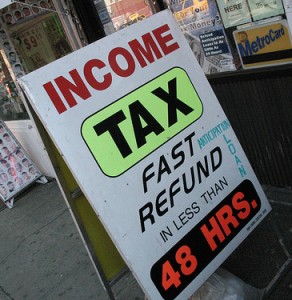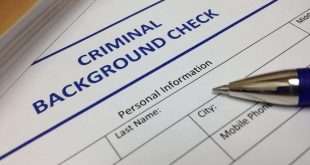 Jesus said, “render unto Caesar the things which are Caesar’s” but He never said anything about giving Caesar an interest-free loan. And yet, according to the IRS, that’s exactly what 75% of taxpayers do year after year by having too many Federal tax dollars deducted from their paychecks. If you are one of them, making a few simple tweaks to your tax withholding could start putting extra money into your bank account instead of the government’s. It could also help you avoid paying hundreds or even thousands of dollars in penalties under Obamacare.
Jesus said, “render unto Caesar the things which are Caesar’s” but He never said anything about giving Caesar an interest-free loan. And yet, according to the IRS, that’s exactly what 75% of taxpayers do year after year by having too many Federal tax dollars deducted from their paychecks. If you are one of them, making a few simple tweaks to your tax withholding could start putting extra money into your bank account instead of the government’s. It could also help you avoid paying hundreds or even thousands of dollars in penalties under Obamacare.
That Income Tax Refund Isn’t Free Money
During the most recent tax year, more than 101 million taxpayers overpaid their federal income taxes. Their refunds averaged $2,651. The tax collector must have been laughing all the way to the bank because that amounts to more than a quarter of a trillion dollars in interest-free loans to the Feds.
Too many taxpayers look forward to getting a fat refund every year. Some see their refund as a way to pay off debt they should have never racked up in the first place. Others treat their refund like an inheritance from a distant uncle and blow it on something they would never consider buying out of their monthly budget.
But if you are getting a refund, it is coming out of your monthly budget with each and every paycheck. It’s not a windfall. It’s your hard-earned money and you might as well keep it in the first place.
In addition, there is a new reason to better manage your tax withholding. If you’re one of the millions of people who have decided they can’t afford or don’t want to comply with the individual health insurance mandate under Obamacare, it’s essential that you minimize or eliminate overpayment of your Federal income tax. You see, confiscating your refund is the only way the IRS can legally collect the fines you will incur if you don’t have the mandated coverage.
How to Withhold the Right Amount in Taxes
It’s relatively easy to estimate your tax liability in most cases, especially if you’re an employee with a steady job. Using this handy calculator can help you accurately determine the correct amount of federal taxes you will owe.
It will also help to have your tax returns from last year when you do the calculation. If you got a raise or expect one during the current year, take that into account when estimating your total income. Don’t forget to account for other significant changes like a new baby or variations in charitable contributions, mortgage interest, or property tax payments.
Once you have a good idea of what your federal tax liability is likely to be, divide that number by the number of paychecks you will receive during the year to see how much federal income tax should be withheld from each paycheck. Compare that number to the federal taxes that were actually withheld from a recent paycheck.
If you are one of the millions of taxpayers who are withholding too much, adjust your personal allowances upward to reduce the amount of tax being withheld. There is no limit to the number of personal allowances you can take. Just make sure that the amount being withheld will equal 90% of your tax liability for the year or 100% of the previous year, whichever is smaller, to avoid underpayment penalties. Also, remember that you can always adjust your allowances during the year if circumstances change the amount of taxes you expect to owe.
Whoever does payroll in your company should be able to give you a close approximation of how much will be withheld from your paycheck with a higher number of allowances. Once you’ve determined the proper number of allowances, you will need to fill out a new W-4 form for your payroll specialist at work.
To summarize, render unto Caesar the things which are Caesar’s. Just don’t render any more than required.
Author Bio: Carter Smith is an independent business development consultant, with a special emphasis on helping Christian companies and organizations grow to their full potential. Carter is currently helping PrivateQuote.com revolutionize the way people compare term life insurance quotes online. He can be reached at this email address.

It’s amazing how simple it is to keep more money in our pockets with some simple adjustments. Thanks for a great article.